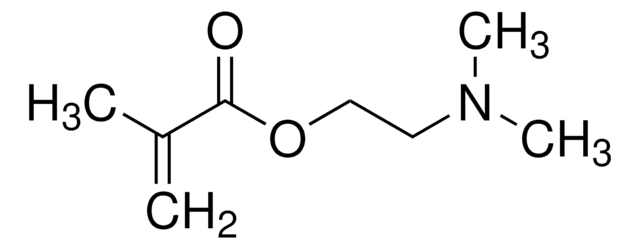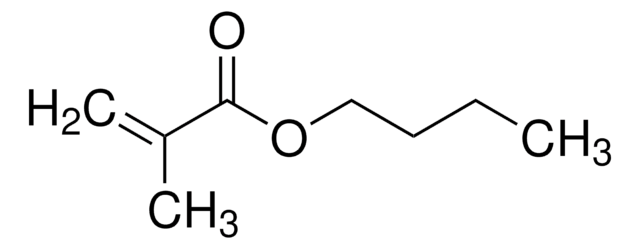おすすめの製品
グレード
pharmaceutical primary standard
蒸気密度
4.91 (15 °C, vs air)
蒸気圧
2 mmHg ( 20 °C)
APIファミリー
butylated methacrylate copolymer
自己発火温度
562 °F
expl. lim.
2-8 %
メーカー/製品名
EDQM
屈折率
n20/D 1.423 (lit.)
bp
162-165 °C (lit.)
密度
0.894 g/mL at 25 °C (lit.)
アプリケーション
pharmaceutical (small molecule)
フォーマット
neat
保管温度
2-8°C
SMILES記法
CCCCOC(=O)C(C)=C
InChI
1S/C8H14O2/c1-4-5-6-10-8(9)7(2)3/h2,4-6H2,1,3H3
InChI Key
SOGAXMICEFXMKE-UHFFFAOYSA-N
類似した製品をお探しですか? 訪問 製品比較ガイド
詳細
アプリケーション
包装
その他情報
シグナルワード
Warning
危険有害性情報
危険有害性の分類
Eye Irrit. 2 - Flam. Liq. 3 - Skin Irrit. 2 - Skin Sens. 1 - STOT SE 3
ターゲットの組織
Respiratory system
保管分類コード
3 - Flammable liquids
WGK
WGK 1
引火点(°F)
119.3 °F - closed cup
引火点(℃)
48.5 °C - closed cup
適用法令
試験研究用途を考慮した関連法令を主に挙げております。化学物質以外については、一部の情報のみ提供しています。 製品を安全かつ合法的に使用することは、使用者の義務です。最新情報により修正される場合があります。WEBの反映には時間を要することがあるため、適宜SDSをご参照ください。
PRTR
第二種指定化学物質
消防法
第4類:引火性液体
第二石油類
危険等級III
非水溶性液体
労働安全衛生法名称等を表示すべき危険物及び有害物
名称等を表示すべき危険物及び有害物
労働安全衛生法名称等を通知すべき危険物及び有害物
名称等を通知すべき危険物及び有害物
Jan Code
Y0001487-1EA:
Y0001487:
最新バージョンのいずれかを選択してください:
この製品を見ている人はこちらもチェック
ライフサイエンス、有機合成、材料科学、クロマトグラフィー、分析など、あらゆる分野の研究に経験のあるメンバーがおります。.
製品に関するお問い合わせはこちら(テクニカルサービス)






